Two-order Runge-Kutta Method for systems of ordinary differential equations using Mathematica
![]()
Аnotation



![]()
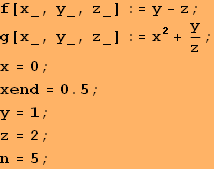
![]()
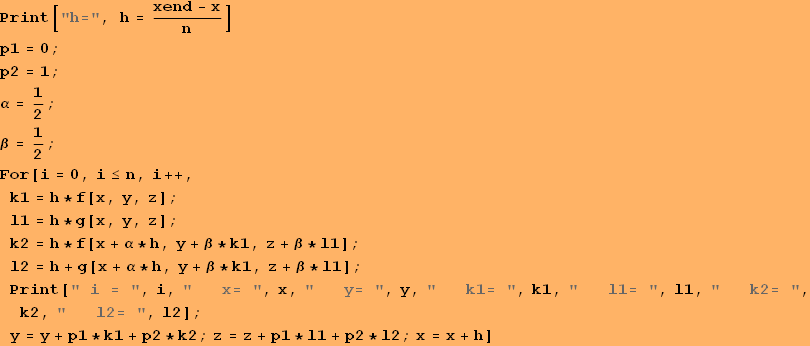
![]()
![]()
![]()
![]()
![]()
![]()
![]()
![]()
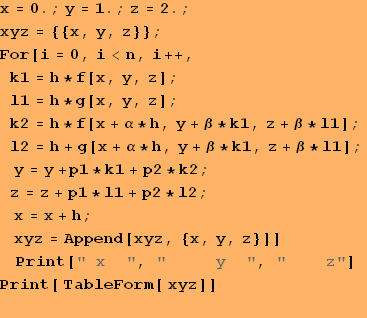
![]()
| 0. | 1. | 2. |
| 0.1 | 0.8925 | 2.57164 |
| 0.2 | 0.714405 | 3.00638 |
| 0.3 | 0.47236 | 3.36747 |
| 0.4 | 0.167222 | 3.68692 |
| 0.5 | -0.203373 | 3.98705 |
Conclusion: The solution derived using the Runge-Kutta method O(![]() ) is in the form of a table of the variable functions y(x) and z(x), shown in the second and third columns of the table above, respectively. Since the local apriori error of the method is O(
) is in the form of a table of the variable functions y(x) and z(x), shown in the second and third columns of the table above, respectively. Since the local apriori error of the method is O(![]() ) (or global error is O(
) (or global error is O(![]() ) ) and here h=0.1, then these solutions must be rounded to three symbols after the decimal point.
) ) and here h=0.1, then these solutions must be rounded to three symbols after the decimal point.
Graphic of the solution

![]()
![]()
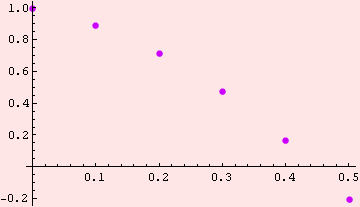
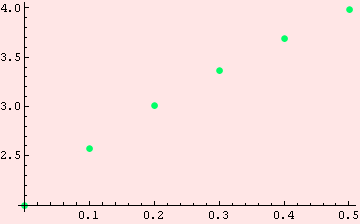
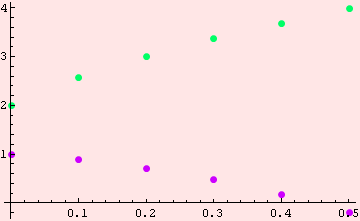
| Created by Wolfram Mathematica 6.0 (22 September 2008) |